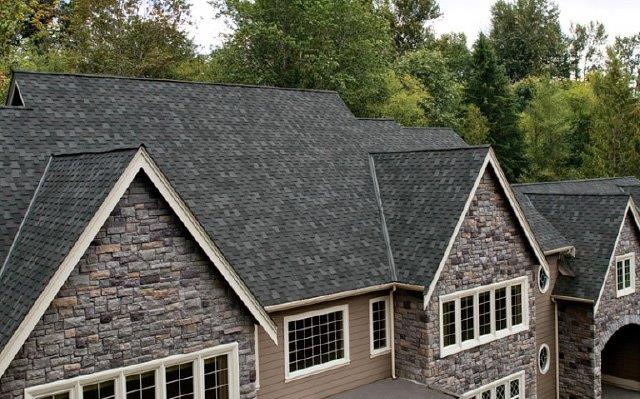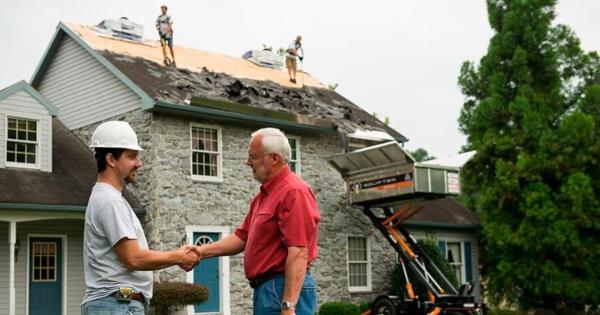Upselling Roof Upgrades

By IKO Industries.
Position Yourself as an Expert and Recommend Smart Upgrades for Success.
Let’s face it: A lot of roof jobs are won by nonprofessionals who ignore key structural concerns or leave out critical components in order to lowball the job. What’s worse is they will mislead homeowners who think they are getting a quality, code-compliant roof replacement. In this blog, we will examine elements of the re-roof process that provide opportunities to educate prospects about the difference between professional and nonprofessional roof installations. This also opens the door to not only defend your price, but potentially upsell in areas that will result in a higher-performing end product.
When you meet with your prospects, make sure you explain the steps involved in the process and point out areas that need special attention. Keep in mind there are almost always opportunities to present your customers with more than just the base material cost and labor to install the shingles.
Three structural/performance considerations that require special care and attention:
1 - Decking enhancement.
There may be deck areas that need to be replaced, and old plank decks may need to be sheathed to ensure a proper attachment surface. Differentiate the needed deck repairs from the options to improve and upgrade the homeowner’s overall structural deck. If applicable, explain why sheathing an old plank deck is important. Show photos of the problem areas that indicate the current deck has been compromised. Discuss potential upgrades in the grade and/or thickness of plywood.
2 - Tricky roof areas.
As a professional contractor, you’ll advise the homeowner of any problem roof areas that need special attention. The old roof may need replacement because of leaks or problems in a specific roof area. You may have found issues related to poor roof design or mistakes in the original installation. A good example would be where the flashing has been damaged in a valley. Take the time to explain how valleys are properly installed and make sure you discuss the function of the accessory products, such as ice and water protection and flashing material, that are used in these applications. There may also be areas where overhanging trees need to be trimmed back. It pays to be aware of all aspects of the reroof details. Explain how your company will address these areas with special materials or repair methods. It is worth noting that IKO recommends metal valleys for roofing installations.
3 - Ventilation upgrade.
Oftentimes, roofs need to be replaced because they have been compromised by poor ventilation. Additional vents may in fact be required for code compliance or shingle manufacturer’s limited warranty coverage and may greatly aid in overall roof performance. Explain to the homeowner the need to provide a balance between eave/soffit and ridge ventilation. Discuss potential upgrades in the performance, style and placement of vents.
Five upgrade options to offer prospects and present the best solution for their needs:
1 - Upgrade shingles.
This is often your first and most obvious opportunity to upgrade the project. The homeowner could initially be looking at a traditional three-tab shingle, because that may be the product currently on his/her roof. Point out different shingle options that can help his/her home stand out in the neighborhood, increase curb appeal and potentially increase the value of his/her home overall. Not only are there various architectural and premium aesthetic options, but also functional performance shingles. In certain geographic regions, you can upgrade to shingles with an impact resistance rating, which may help reduce the homeowner’s insurance costs.
2 - Position roofing starter strips, like Leading Edge Plus™.
Roofing accessories, like Leading Edge Plus starter strips, are fast, easy and convenient to install. They may help make your job easier and may provide peace of mind to the homeowner that he/she is receiving a more complete roofing system, which is an important consideration for any roof installation.
3 - Ice and water protectors.
Self-adhering eave protection membranes, such as IKO’s StormShield®, ArmourGard TM and GoldShieldTM, have been commonly used in northern regions as ice dam protection for many years. They are required by code in many areas. These versatile rolled roofing products are also beneficial as a secondary water shedding layer in southern, coastal markets or in any “detail” roof area (valleys, dormers, penetrations, etc.) for extra protection.
4 - Underlayment.
Some of your competitors may be telling the homeowner that underlayment is not required in an effort to win a cheaper job. Explain the benefit of underlayment, such as IKO Stormtite™ or IKO RoofGard-Cool GreyTM, as a secondary water-shedding layer. Use of an underlayment to cover the deck prior to shingle installation is a requirement of most building codes, so be sure to review underlayment options with the homeowner.
5 - Upgrade ridge caps.
Most homeowners may not be aware that hip and ridge cap options exist. Explain the beefy look of doubled-up ridge caps or a prefolded three-dimensional capping option, such as IKO’s UltraHP® high profile caps. Again, an upgrade here can really make a bold difference in the overall roof appearance.
Many of the options listed above are components of a comprehensive, total approach to roofing. IKO has developed superior multilayered roofing accessories for vulnerable areas of the roof in their PRO4™ Roofing Components product offering. You can refer to and use this powerful tool to help explain to your customer how elements of the roof work together to protect them and their home.
Gerry St. Germain of Gerry’s Roofing & Siding Inc. in Hamilton, Ontario, has been a top local roofing contractor for many years and has learned to do more for homeowners than just bang on a new shingle layer.
Gerry adds, “We’ve been promoting upgraded shingles whenever possible, such as IKO’s Dynasty® with ArmourZone®, and we always sell a synthetic underlay on all our roofs for greater protection.”
If you’re updating your estimate/quote sheets, provide spaces for some or all of the items listed above. The roof installation quote should clearly show the basic requirements (shingles, disposal costs, valley flashings, drip edges, etc.) and then list valuable upgrade options, perhaps in a section subtitled “Roof/Home Improvement Options.” Explain how each item can be of benefit to the homeowner in additional peace of mind, roof performance, potential home/resale value or building code and limited warranty compliance.
It’s not about selling unnecessary add-ons; it’s about positioning as an expert and creating value for the homeowner with a better-performing and/or better-looking roof system. Executed correctly, it will open up opportunities to upgrade critical aspects of the roof installation, which will have a positive impact on both your bottom line and the experience you deliver to your customers.
Learn more about IKO Industries here.
Editor’s note: This article first appeared on the IKO blog and can be viewed here.























Comments
Leave a Reply
Have an account? Login to leave a comment!
Sign In